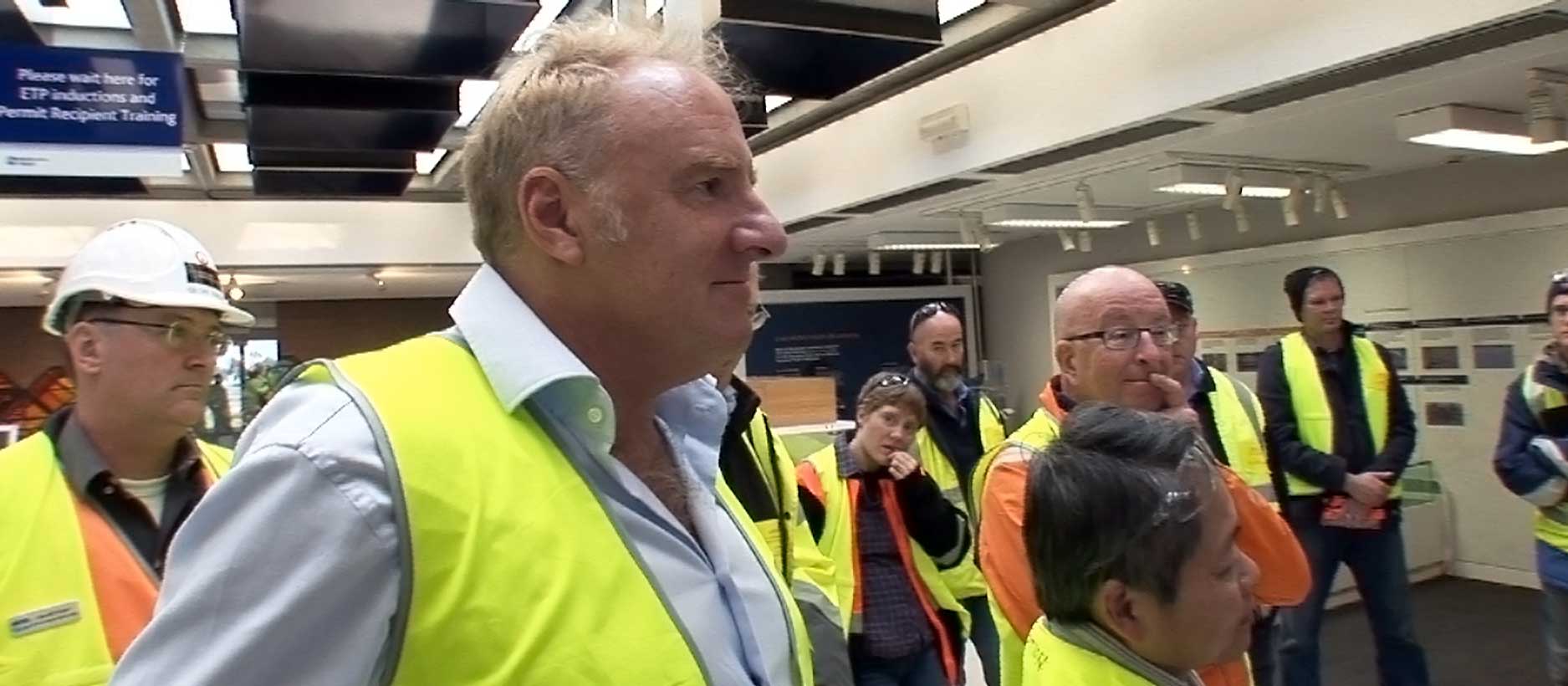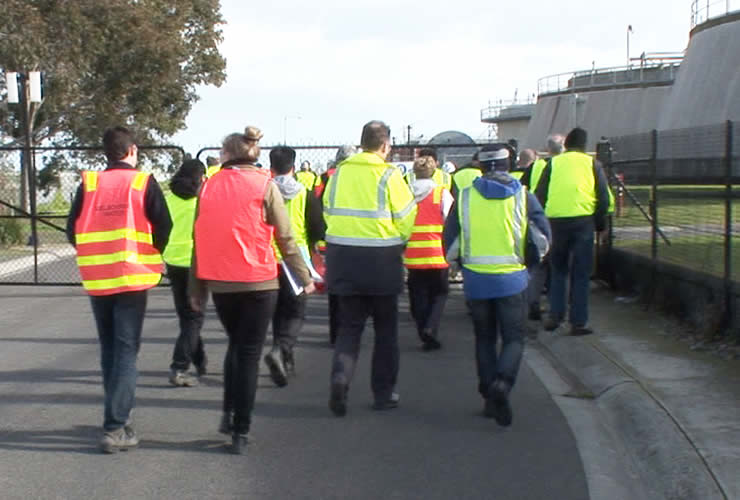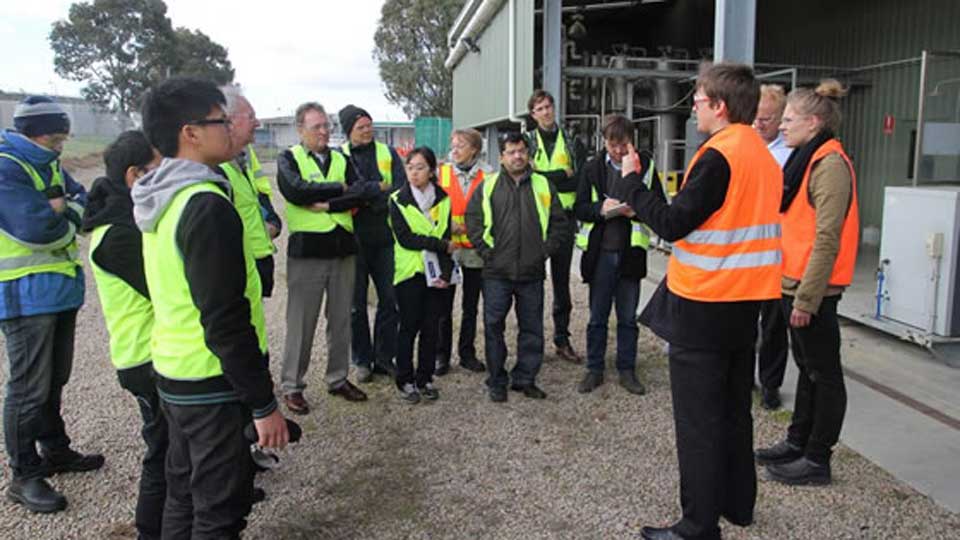The majority of urban Australians receive high quality water in their homes and today they have plenty of it. Yet water professionals and water scientists know that the driest continent on the planet must increase its water supply capability for future dry spells and droughts.
“Unlocking new ways in which we can treat water will give us more opportunities to explore different sources of water,” said Associate Professor Mikel Duke, Principal Research Fellow at Victoria University’s Institute for Sustainability and Innovation. “Water recycling is very important to Australia because of a lack of water and increasing urbanisation. We need approaches that will take us beyond the limitations of existing technologies so we can diversify our sources of water in a cost effective way. We need innovation to do that.”
Duke is the project leader on a 12 month pilot trial, hosted by Melbourne Water at their Eastern Treatment Plant, which is testing the performance of ceramic membranes and ozonation in treating waste water.
Ceramic membrane technology is not new but it has previously been too expensive for water utilities to consider for their treatment systems. Dutch water utility PWN saw the potential for ceramic membranes and spent years developing the technology into a system that would be cost effective, energy efficient and sustainable.
Initially developed for their own needs, treating polluted water from the Rhine, PWN has now delegated the task of taking its CeraMac® technology to the world through its daughter company, PWN Technologies.
It is a game changing technology, according to PWNT CEO, Jonathan Clement, because the CeraMac® system is an effective way of combining a number of membranes together to get a very efficient operation.
“We are talking about massive improvements, not marginal improvements,” he said. “We’re not enhancing treatment systems by 10 or 20%. We’ve reduced the compactness of the conventional ceramic design by about 90% and reduced energy use by around 50%. These are very large changes to the economical use of ceramic membranes.
“Further, ceramic membranes last indefinitely whereas polymerics need to be changed every five to eight years. This is expensive and requires a heavy use of resources.”

American-born Clement, who took up the reins at PWNT in May this year, is an internationally recognised water treatment specialist. Early on he saw the potential of the work PWN was doing and decided he wanted to be a part of it. Now headquartered in Amsterdam he spends much of his time travelling to work on ceramic membrane projects across the globe.
Whilst he is convinced of the performance and stability of the CeraMac® system, Clement is quick to acknowledge the need to prove it in new situations as each presents different challenges.
“We can’t simply claim how great the technology is,” he said, “rather we have to prove in an open and transparent environment that the technology works to stated and often unstated expectations.”
While projects in Holland, UK, California (with Metawater) and Singapore are all at various stages of development, each designed to meet specific needs, the Australian pilot is unique in that it is the first in this country to test the technology with secondary effluent.

“Most of the overseas work has been on surface water for drinking purposes, while our trial looks at water recycling” said Duke. “This is the first time something like this has been set up anywhere in Australia and it’s attracting a lot of interest.”
Professional interest has been widespread. The project is funded by the Australian Water Recycling Centre of Excellence (an Australian Commonwealth Government initiative) and supported by PWN Technologies, Black & Veatch, Melbourne Water, South East Water and Water Research Australia.
The results so far are extremely promising.
“High fluxes have been achieved making the process more economical ,” said Duke. “We have been able to demonstrate a novel water treatment technology, ozone and ceramic membranes, at the thousands of litres per hour scale.”
Ozone, a common treatment used for disinfection and micro contaminant removal, was shown to also help clean the membrane. It breaks down at the membrane surface to produce highly reactive hydroxyl radicals that are responsible for these benefits. This complementary cleaning effect showed opportunities for significantly enhanced performance, reduced plant size and cost, and increased water disinfection.
“The benefit of ozone contact with the membrane is that it also cleans it, an effect which leads to a reduction in the use of cleaning chemicals, as well as enhanced performance” said Duke.
The Australian project also tracked what happened to the reject water. Results showed enhanced removal of E. -coli which is quite novel for this technology anywhere, according to Duke.
“Ceramic membranes effectively remove pathogens and are also robust and reliable, lasting decades without failure or replacement,” he said. “This will allow us to have a greater diversity of choices over what types of water we can feed into water recycling systems.
“In turn, this gives us more options for an effective and sustainable water future, opening up opportunities to cheaply and safely harness more water sources for residential, industrial and agricultural water recycling.”
From a scientific perspective the pilot has demonstrated that in the utilisation of ozone with the ceramic membrane there is a remarkable complementary chemistry which leads to the observed high performance.
“The science is unique and very interesting, unlocking new ways in which we can treat water.” said Duke.

